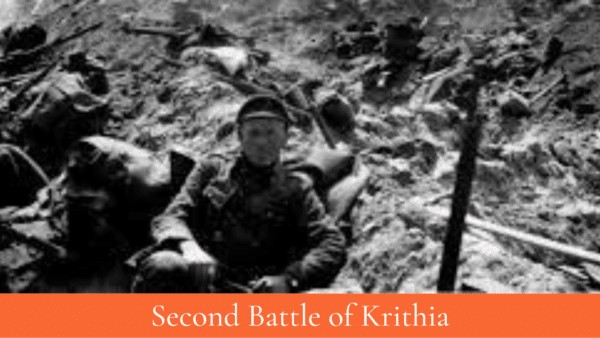After the Allies failed to capture Krithia and Achi Baba on April 28, 1915, during the First Battle of Krithia in the Gallipoli Campaign, they tried again on May 6. The Allied forces at Cape Helles, led by British commander Aylmer Hunter-Weston, had been reduced to 14,000 troops from 20,000 after the first attack.

The Turkish force, led by German officer Liman von Sanders, was positioned in the long front of Krithia. Liman was acting under the instructions of the Turkish Minister of War, Enver Pasha, to deny the Allied forces access to Krithia and Achi Baba.
This would prevent the Allies from evicting the Turkish defenders from the heights overlooking the Dardanelles Straits.
Enver had authorized Liman to respond to the Allied attacks of April 28 with counter-strikes of his own on May 1 and 3. However, both counter-strikes were repulsed with heavy Turkish losses.
Nevertheless, the attacks were an indicator of Enver's determination to resist further Allied advances north of Cape Helles.
The Battle
On May 6, 1915, Allied commander Aylmer Hunter-Weston renewed his attack on Krithia. He was reinforced by two Anzac brigades, bringing his force to 25,000 men and 20 additional guns. However, the Turkish force had also been reinforced, so Hunter-Weston did not have a numerical advantage.
The attack was launched at noon, but it was poorly coordinated, and the Allies made only a few meters of progress. Hunter-Weston renewed the attack the following day, but again, there was little progress.
On May 8, he launched a third and final attack, but this time, the Allies made some real gains, pushing the Turkish line back by almost a mile.
Despite these gains, the Allies were unable to capture Achi Baba. Hunter-Weston's casualties were high, with an additional loss of 6,000 men.
Allied commander Sir Ian Hamilton was determined to secure the capture of Achi Baba, and he requested additional reinforcements from war minister Lord Kitchener.
However, Kitchener's response was not encouraging, and it took three weeks for the reinforcements to arrive.
In the midst of the so-called "Shell Scandal," which was caused by British Commander-in-Chief on the Western Front Sir John French, Kitchener could not afford to redirect ammunition from the highest-profile area of fighting to the Gallipoli "sideshow."
He could also not offer more than a single division to bolster Hamilton's dwindling force.
Fighting at Krithia was renewed on June 4, with Achi Baba once again the target. In the interim, fighting on the Gallipoli Peninsula took on the form of trench warfare similar to that seen on the Western Front, with the critical difference that the Allied forces found it highly problematic to construct trench lines that were not readily accessible to Turkish shellfire.
